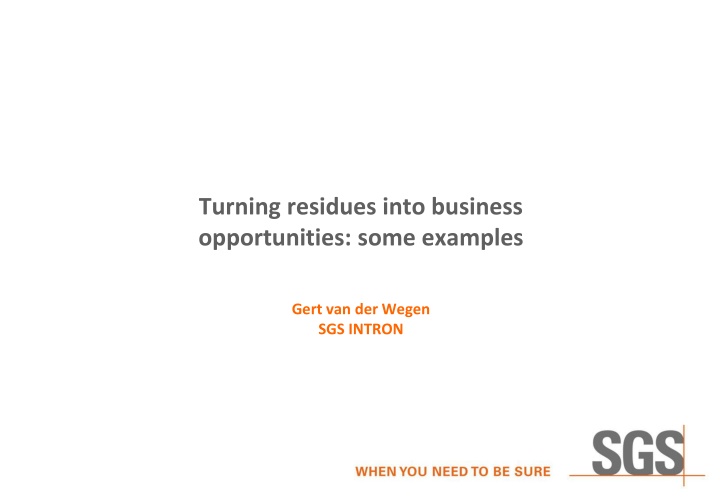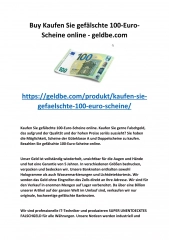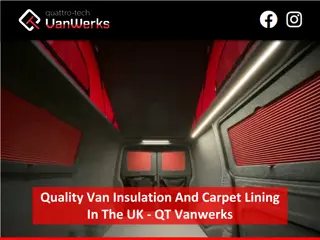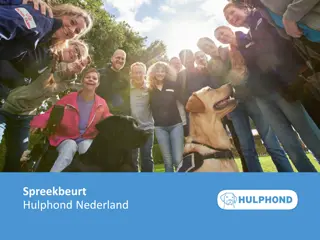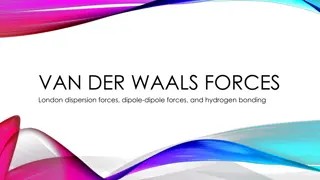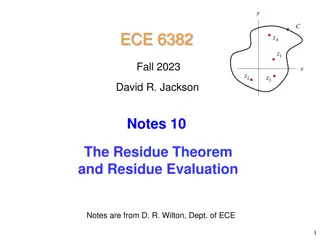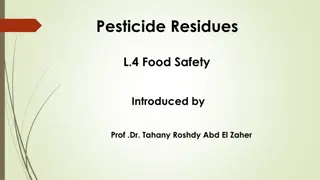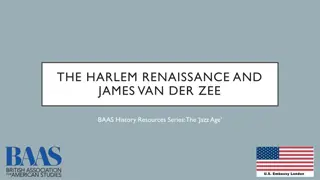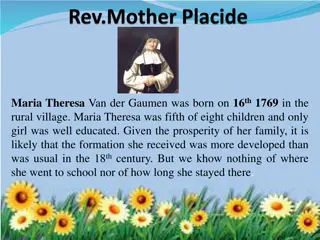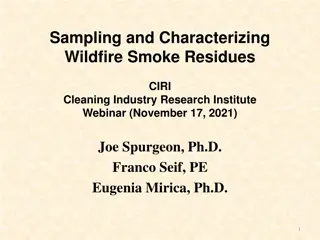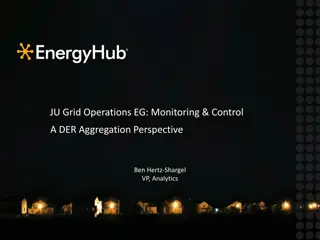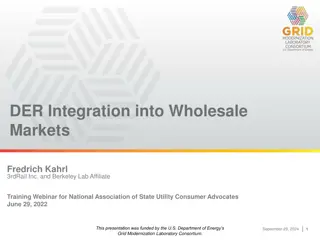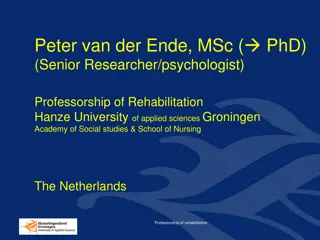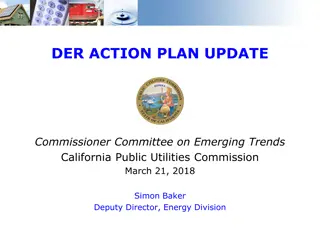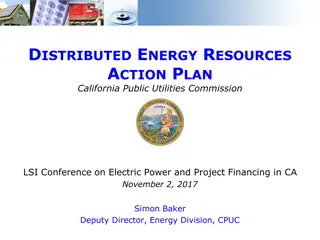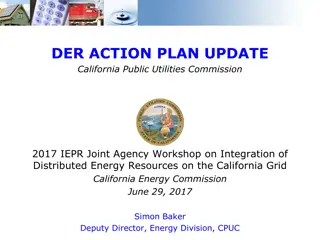Turning Residues into Business Opportunities: Examples and Innovations by Gert van der Wegen
Discover how Europe is leading the way in sustainable practices by recycling waste materials into profitable resources through innovative techniques like utilizing blast furnace slag. Learn about the production, composition, and applications of ground granulated blast furnace slag (GGBS) as a binder in the cement industry, showcasing how waste can be turned into business opportunities.
Download Presentation

Please find below an Image/Link to download the presentation.
The content on the website is provided AS IS for your information and personal use only. It may not be sold, licensed, or shared on other websites without obtaining consent from the author.If you encounter any issues during the download, it is possible that the publisher has removed the file from their server.
You are allowed to download the files provided on this website for personal or commercial use, subject to the condition that they are used lawfully. All files are the property of their respective owners.
The content on the website is provided AS IS for your information and personal use only. It may not be sold, licensed, or shared on other websites without obtaining consent from the author.
E N D
Presentation Transcript
Turning residues into business opportunities: some examples Gert van der Wegen SGS INTRON
Introduction Sustainable society: recycling, reuse or recovery of materials and energy from wastes Europe has very limited primary resources economical importance EU policy: recycling society Waste Framework Directive: recycle 50% of municipal waste and 70% of construction & demolition waste by 2020! Waste treatment = new industry (jobs + technology) Wastes can be turned into profits: 3 examples based on Dutch experiences 2 SGS INTRON SVS Leuven 17-04-2015
Blastfurnace slag By-product of iron production in blast- furnace (1500oC) Molten slag on top of molten iron Rapid cooling of molten slag through high-pressure water jets granulated blastfurnace slag (up to 5 mm grains; amorphous structure) Drying and grinding (450 m2/kg) ground granulated blastfurnace slag (GGBS) 3 SGS INTRON SVS Leuven 17-04-2015
Composition Constituent(%) CaO SiO2 Al2O3 MgO Fe2O3 PC 65 20 5 2 3 GGBS 40 35 10 8 0 FA 4 59 22 2 8 PC = Portland cement FA = fly ash (from powder coal) Latent hydraulic (activator needed) 4 SGS INTRON SVS Leuven 17-04-2015
Production and use as binder First application: lime activated GGBS in 1865 In 1880 with PC as activator (Europe, USA) Netherlands: 1930 CEMIJ (Hoogovens/Tata Steel); ENCI Rotterdam and Maastricht Netherlands: total cement = 5 Mton/y of which 55% CEM lll (highest % worldwide) 1.7 Mton/y GGBS 5 SGS INTRON SVS Leuven 17-04-2015
Production and use as binder Worldwide production of BFS = 400 Mton/y Europe = 30 Mton/y; 80% is granulated (= 24 Mton/y GBS); about 80% of GBS is used in cement or concrete (= 20 Mton GGBS per year) In cement GGBS is fully considered as binder (EN 197) Cement type Portland cement Clinker 100 80-94 65-79 35-64 20-34 40-64 20-38 GBS 0 0 0 36-65 66-80 18-30 31-50 Fly ash 0 6-20 21-35 0 0 18-30 31-50 CEM l CEM ll/A-V CEM ll/B-V CEM lll/A CEM lll/B CEM V/A CEM V/B Portland fly ash cement Portland blastfurnace slag cement Composite cement 6 SGS INTRON SVS Leuven 17-04-2015
Production and use as binder GGBS applied at ready-mixed concrete plant = type ll addition: only partially (k-value) considered as binder GGBS k-value = 0.6 (under discussion) Based on principle of equivalent concrete performance it is possible to obtain k=1 for specific combinations of GGBS and CEM l (NL since 2003 and B since 2013): attest In NL also possible for ternary systems: CEM l GGBS FA This combination is well suited for optimization of durability, sustainability and economics 7 SGS INTRON SVS Leuven 17-04-2015
Distinctive properties Compared to CEM l cement CEM lll: Has higher resistance to chloride ingress, alkali-silica reaction, sulphate attack, chemical degradation Is more sustainable (lower environmental impact) Has lower heat of hydration (lower risk of cracking) However, is more sensitive to curing conditions of concrete Develops strength slower at early ages and at low temperatures Has less resistance to carbonation and freeze-thaw with DC 8 SGS INTRON SVS Leuven 17-04-2015
Distinctive properties Denser microstructure (more gel less capillary pores) when properly cured: lower diffusivity and permeability 9 SGS INTRON SVS Leuven 17-04-2015
Distinctive properties Excellent performance in marine and aggressive environ-ments. E.g. Eastern Scheldt barrier (NL; design service life of 200 years) and King Fahad Causeway (Bahrain KSA; design service life 70 150 years) oosterschelde-stormvloedkering1 10 SGS INTRON SVS Leuven 17-04-2015
Sustainability Environmental impact of CEM lll concrete is about 60% lower compared to same concrete with CEM l cement (emission of green house gases = EGHG): Concrete (kg/m3) CEM l CEM lll Water River sand River gravel CEM l (ref) 300 0 165 616 1232 287 (100%) CEM lll* 0 300 165 610 1220 116 (40%) EGHG (kg CO2-eq) * average of Dutch CEM lll/A and CEM lll/B 11 SGS INTRON SVS Leuven 17-04-2015
Economics CEM lll somewhat lower in price than CEM l cement (in NL) due to price of GGBS is lower than costs for producing and grinding clinker Use of GGBS as type ll addition within attest (i.e. fully considered as binder (k=1)), needs initials tests to proof equivalent performance of the specific combination. Market price of GGBS in such high valued applications is about of cement price (depending on specific market conditions) Very lucrative, even with the costs for initial performance testing and quality assurance 12 SGS INTRON SVS Leuven 17-04-2015
Powder coal fly ash By-product of pulverised coal fired power plants (1200oC) Separated from flue gas by electrostatic precipitators or cyclones and stored in silos http://www.consumersenergy.com/uploadedImages/Generation/NG_Pulverised_Coal_Tech.gif 13 SGS INTRON SVS Leuven 17-04-2015
Powder coal fly ash After combustion fly ash particles are in molten state When leaving the furnace very rapid cool down amorphous and spherical particles Pozzolanic (type F; low Ca) or even self-cementing (type C; high Ca) properties Focus on type F fly ash 14 SGS INTRON SVS Leuven 17-04-2015
Composition Constituent(%) CaO SiO2 Al2O3 MgO Fe2O3 PC 65 20 5 2 3 GGBS 40 35 10 8 0 FA 4 59 22 2 8 PC = Portland cement FA = fly ash (from powder coal) Pozzolanic: needs activator like cement, lime, 15 SGS INTRON SVS Leuven 17-04-2015
Production and use as binder Successfully used in concrete for over 70 years now Started as a filler, but pozzolanic nature was swiftly noticed Hungry Horse Dam (USA 1948) 3 Mm3of concrete 35% of CEM l replaced by FA (reduce heat of hydration) File:Hngryh2.jpg 16 SGS INTRON SVS Leuven 17-04-2015
Production and use as binder Mid 70 s strong increase of electricity production by firing powder coal large amounts of fly ash Early 80 s cement industry started production of Portland fly ash cement (fly ash fully considered as binder) Fly ash used as addition type ll (added at the ready-mixed concrete plant): k-value concept (k = 0.2 0.4) Based on principle of equivalent performance the attestation of specific combinations of fly ash and cement was develop-ed in NL in 1992, considering the fly ash fully as a binder (k=1), similar to Portland fly ash cement (CEM ll/B-V) A similar system will be introduced in Belgium this year 17 SGS INTRON SVS Leuven 17-04-2015
Production and use as binder Worldwide production of fly ash is more than 400 Mton/y Most of it is landfilled; only small part is used for high end purposes such as binder in concrete In Europe about 30 Mton/y of fly ash is produced of which only 8% is disposed off. About 30% is applied in cement or concrete In NL about 1 Mton/y of fly ash is produced, which is almost entirely used in cement and concrete. Actually, fly ash is sometimes imported from abroad due to a shortage In Belgium about 0.5 Mton of fly ash is produced each year 18 SGS INTRON SVS Leuven 17-04-2015
Distinctive properties First few weeks the contribution of fly ash is limited to its physical properties: filler effect due to its fineness lower water demand due to spherical shape Chemical contribution = pozzolanic reaction = formation of cementitious hydrates, occurs at later age Denser structure (capillary gel pores) after 1 year about the same as CEM lll/B 19 SGS INTRON SVS Leuven 17-04-2015
Distinctive properties Chloride diffusion coefficient as function of time Carbonation and freeze-thaw resistance is even much better 20 SGS INTRON SVS Leuven 17-04-2015
Sustainability Environmental impact of concrete with fly ash as part of binder is 33% lower compared to same concrete with CEM l cement Concrete (kg/m3) CEM l (ref) CEM lll CEM l-FA CEM l CEM lll Fly ash Water River sand 300 0 0 165 616 0 200 0 100 165 610 300 0 165 610 River gravel 1232 1220 1220 287 (100%) 116 (40%) 193 (67%) (EGHG = emission of green house gases) EGHG (kg CO2-eq) 21 SGS INTRON SVS Leuven 17-04-2015
Economics Fly ash can partly replace cement (k-value 0.2 0.4) positive but limited economic value Use of fly ash as type ll addition within attest (i.e. fully considered as binder (k=1)), needs initials tests to proof equivalent performance of the specific combination. Market price of fly ash in such high valued applications is about of cement price (depending on specific market conditions) Very lucrative, even with the costs for initial performance testing and quality assurance 22 SGS INTRON SVS Leuven 17-04-2015
Municipal incinerator bottom ash EU 350 Mton/y household waste: 40% recycled; 25% incinerated; 35% landfilled Incinerated because recovery of energy and reduction of waste volume Municipal incinerator bottom ash (MIBA) NL: 15 Mton/y municipal waste 7 Mton/y incinerated 2 Mton/y MIBA 23 SGS INTRON SVS Leuven 17-04-2015
Treatment and applications Standard treatment raw bottom ash: sieving, separation of ferrous (magnetic) and non-ferrous (Eddy current), hand-picking Embankments (noise barriers) and (un)bound base courses for roads These applications are discouraged in NL because of environmental issues Looking for alternatives with more added value upgrading quality of MIBA 24 SGS INTRON SVS Leuven 17-04-2015
Upgrading quality Wet process: similar to traditional washing of polluted soil Fractions: 40-4 mm, 4-0.1 mm and residue Additional recovery of (non)ferrous from fractions 40-4 and 4-0.1 Residue contains very fine and low density particles Dry process: called ADR technology Developed by TU Delft (patented) Based on ballistic principles Higher recovery of (non)ferrous Separation of porous particles 25 SGS INTRON SVS Leuven 17-04-2015
Aggregate for concrete Wet process: Effectively removes undesired constituents like Cl, SO4, Na, K In general meets basic requirements for application in concrete Dry process: Higher contents of Cl, SO4, Na, K; can be a problem for application in reinforced or prestressed concrete For structural concrete the particle density should be > 2100 kg/m3 Upgraded MIBA can replace 20 %V/V of fine and coarse aggregate in concrete. Up to 40 %V/V in concrete paving blocks and flags 26 SGS INTRON SVS Leuven 17-04-2015
Aggregate for concrete At same compressive strength other structural properties (tensile strength, E-mod, ) are similar to concrete with no replacement in aggregates Shrinkage and creep are increased when replacing 20% V/V of fine and coarse aggregate Durability (carbonation, freeze-thaw, ASR) is similar to concrete without MIBA, except for chloride ingress (50% higher) 27 SGS INTRON SVS Leuven 17-04-2015
Sustainability Environmental impact of concrete with 40% replacement of river gravel and sand by MIBA is 4% lower compared to same concrete with only river gravel and sand Concrete (kg/m3) CEM l (ref) CEM lll CEM l-FA MIBA CEM l CEM lll Fly ash Water River sand River gravel MIBA 300 0 0 165 616 1232 0 287 (100%) 0 200 0 100 165 610 1220 0 193 (67%) 300 0 0 300 0 165 610 1220 0 116 (40%) 165+24 370 732 608 274 (96%) EGHG (kg CO2-eq) (EGHG = emission of green house gases) 28 SGS INTRON SVS Leuven 17-04-2015
Economics Taxes on landfilling MIBA can be very high (up to 80/ton in EU) Although only a few % of MIBA is metals, their high market value is sufficient to cover the costs of the upgrading process Use of (unbound) MIBA in embankments and road construc-tions requires additional measures to prevent leaching negative price for MIBA of about 10 /ton Applied as aggregate in concrete a market price of about the price of river sand is obtained Concrete paving block and flags with up to 40% MIBA are produced nowadays 29 SGS INTRON SVS Leuven 17-04-2015
Conclusions The 3 examples described clearly demonstrate that mineral residues can be turned into valuable raw materials for the concrete industry Some of such residues (GGBS and FA) even improve the performance of concrete significantly. Not only from a materials but also from a sustainability and economic point of view Residues of lesser quality need to be upgraded before application, but can still be of interest 30 SGS INTRON SVS Leuven 17-04-2015
